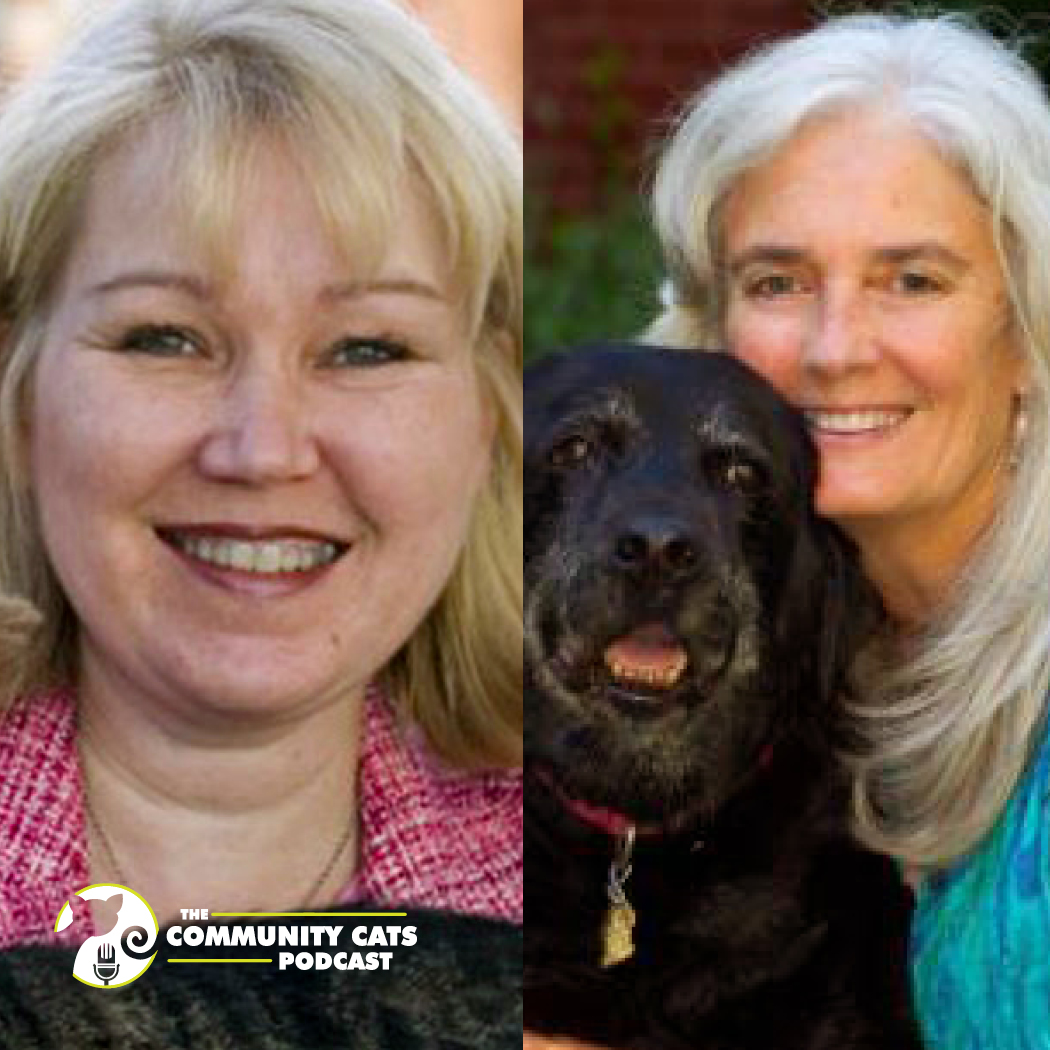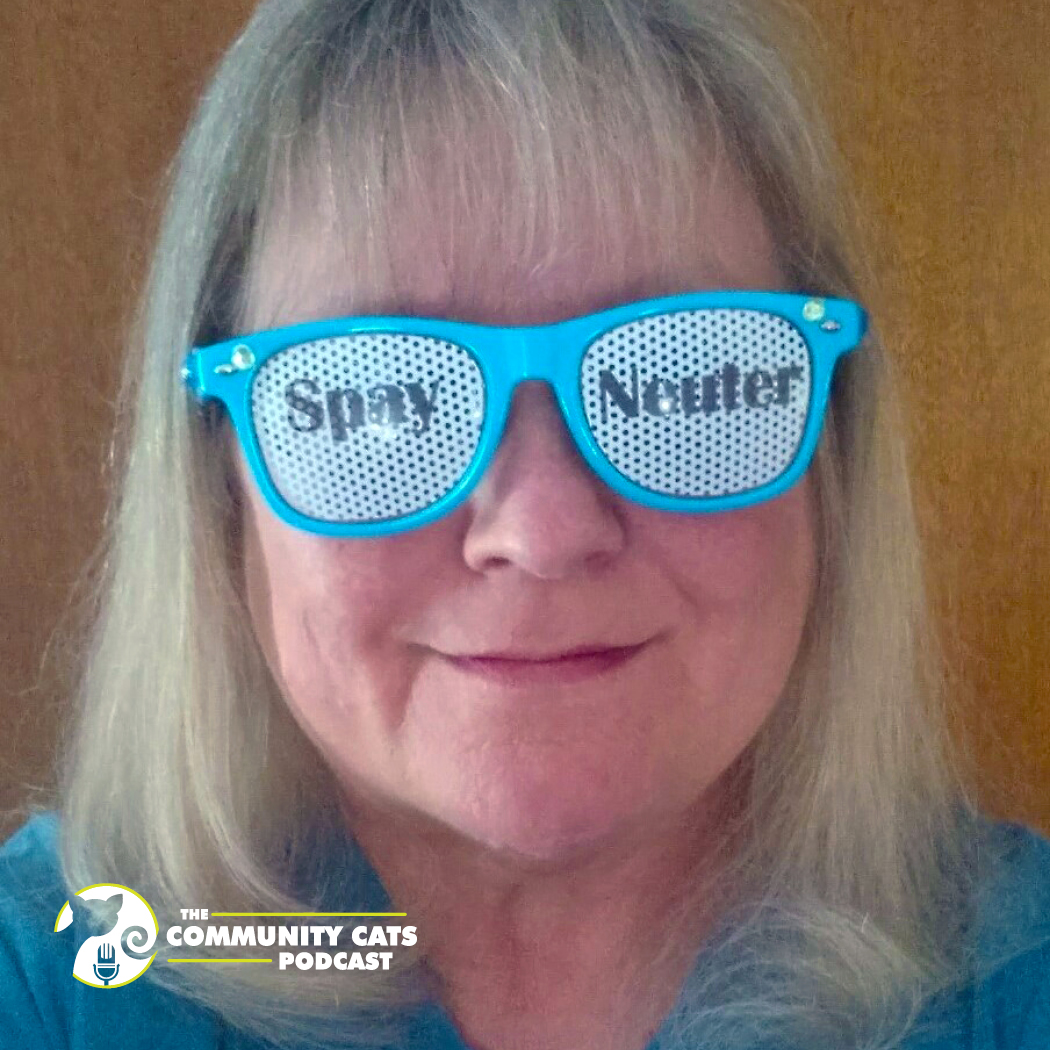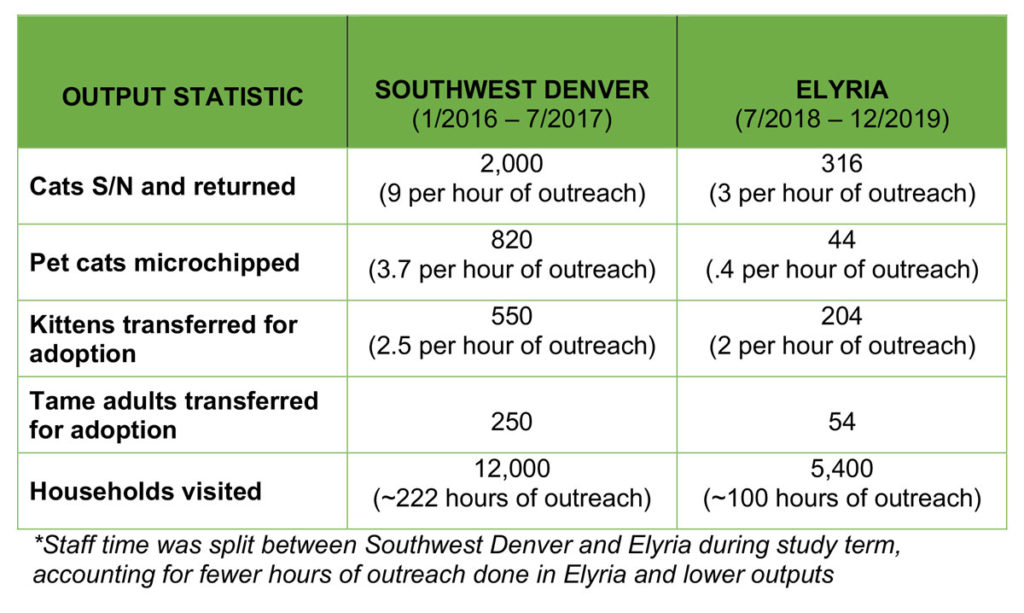
Bonney Brown and Diane Blankenburg, Humane Network
August 11, 2020
Julie Jacobson, Spay Tennessee and CCP Community Cats Grants Program
August 18, 2020
Today’s guest post comes to us from Anna Murrin of Metro Denver CAT.
Cat homelessness and overpopulation are problems that face animal welfare groups and the communities they support across the country. Addressing such a widespread problem is daunting when the data is incomplete. Metro Denver CAT is a program created by several animal welfare organizations to address the community cat issues in Denver, Colorado, with the goal of collecting meaningful data and making sustainable progress to create a replicable framework. The pilot project began in Denver’s Westwood neighborhood in 2016 and has grown to include five zip codes in the metro area.
Maddie’s Fund awarded Metro Denver CAT a grant for an 18-month study to compare data from the first neighborhood service area (Westwood) and the most recently added neighborhood (Elyria Swansea). This study compares results in areas that share some demographic commonalities but differ in important ways and identifies key metrics to help focus efforts.

The cumulative data collected during the grant term allowed us to create a set of indicators that can be used to identify high-need neighborhoods. Historically, organizations have determined areas of need by using internal data such as intakes, complaint calls, and anecdotal information. While this is a helpful starting point when planning a community project, this data can be skewed in several ways. For example, proximity to shelter affects intake, and the frequency of complaints can indicate the level of concern more accurately than the actual need existing in neighborhoods because areas needing services the most are not connected to animal service providers.
Broad socio-economic data can be a more useful tool to identify areas with a high concentration of underserved animals. When comparing key demographics of our original focus neighborhood to Elyria Swansea, we see they share key similarities:
- Median household income below state average
- Hispanic population percentage significantly above the state average
- Median age below state average
- Percentage of population with a bachelor’s degree or higher significantly below state average
While we were able to achieve our goal of serving 500 cats in Elyria Swansea, we found that identifying cats in need required approximately 300% more community outreach compared to Westwood. The difference was especially stark when we look at pet cats, where we found more than three pet cats requiring services per hour of outreach in Westwood. The same amount of outreach yielded less than one cat in Elyria Swansea. Key demographic differences emerged as indicators to account for the difference in the number of cats identified:
- Population density
- Percentage of renters
The population density of Westwood is almost nine times higher and the total population is over five times higher than Elyria Swansea, but the land area of Westwood is only 30% larger than Elyria Swansea. It is logical that areas denser in a human population would see a correlating density of cat population because feral cats who are not social to people rely on humans for resources. The percentage of renters in Elyria Swansea is 10–15% higher than in Westwood—a possible explanation for the significantly lower number of pet cats identified. Over 50% of renters in Elyria Swansea have no lease agreement, pointing to housing instability, which makes pet ownership a challenge and may make residents less likely to engage with caring for or feeding outdoor cats. Data also indicates that these neighborhoods are vulnerable to gentrification and involuntary displacement.
By replicating successful components of the Metro Denver CAT model and considering demographic data points, urban and suburban areas across the country can design high-impact cat programs and start moving the needle on this complex and widespread problem.
Visit www.denvercats.org to read the full study and for more detail on the program design and components.
Anna Murrin is the project manager for Metro Denver CAT, where she has worked on designing and implementing effective solutions to cat overpopulation and welfare concerns since 2016. Her experience in animal welfare has focused on a variety of outreach-based programs, including spay/neuter outreach with the ASPCA in New York City, and she is passionate about connecting directly with communities to help people improve the lives of the animals in their care.




